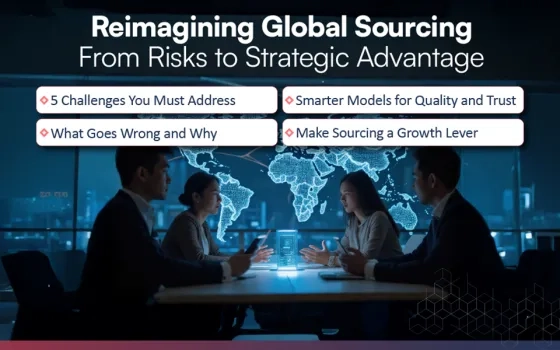Allied Market Research expects the global predictive analytics market to grow to S$35.45 billion by 2027 at a compound annual growth rate (CAGR) of 21.9%.
The global market today is highly unpredictable, thanks to ever-changing customer expectations, supply chain disruptions, and a continuous threat of new competitors entering the market. Predictive analytics gives businesses a much-needed capability to look into the future and adjust their course of action to stay competitive and profitable.
For a long time, Predictive Analytics remained a highly sophisticated and complicated field that only data scientists and data analysts could work in and make use of; however, thanks to AI technologies, such as machine learning, now even business users with minimal training can tap into predictive analytics to analyze historical and current data to gain insights to streamline operations, mitigate risks, and discover opportunities.
What is Predictive Analytics?
Google defines predictive analytics as “a variety of statistical techniques that analyze current and historical facts to make predictions about the future. With the help of sophisticated tools, big data machine learning, and AI models, organizations can use historical and current data to reliably forecast trends and behaviors seconds, days, or years into the future with great precision.”
Predictive analytics helps businesses look into the future and predict the events and outcomes that can affect them. It’s a branch of advanced analytics that analyzes all the data companies gather from their transactional databases, social media, videos, images, text, etc. Predictive analytics uses historical and current data, sophisticated statistical algorithms, and Big Data Machine Learning to enable user organizations to accurately predict future outcomes and effectively prepare for unforeseen events. Business leaders can use predictive analytics to make more intelligent and forward-looking decisions - a competitive edge in today’s hyper-competitive market.
Predictive Analytics vs. Prescriptive Analytics
Prescriptive analytics is the last step in business analytics. Prescriptive analytics draws on predictive analytics and takes it a step further by offering specific and actionable steps to address the risks and opportunities identified with the help of predictive analytics. In a nutshell, predictive analytics is about identifying what lies ahead, and prescriptive analytics is about building specific solutions to address those risks and opportunities.
What is predictive analytics used for?
Predictive analytics holds value for nearly every business or industry, from healthcare to manufacturing. Companies use predictive analytics to forecast inventories, manage equipment maintenance, set prices, recommend products and services, identify fraud, and hire employees to fill the skills gap. With predictive analytics, organizations are in a better position to control costs, optimize operational and financial decision-making, and improve revenue.
- Predictive analytics turbocharges marketing campaigns: Predictive analytics can enable marketing professionals to anticipate industry trends and customer behavior changes. With the ability to see what lies ahead, marketers can gain a deeper understanding of what their customers need and craft their marketing campaigns to achieve improved results.
- Insurance industry benefits from predictive analytics: Insurance companies employ predictive analytics and artificial intelligence (AI) technologies to target their customer segments better, reduce customer churn, identify and prevent risk, and increase customer lifetime value. The newly acquired capabilities to understand customer needs and preferences at a deeper level enable these organizations to stand apart from the competition and identify new business opportunities.
- Human resource professionals benefit from predictive analytics: Human resource leaders juggle a lot of people's data. Predictive analytics enables them to make sense of the massive amounts of data they possess to streamline their operations and positively contribute to the overall outcomes of their organizations. With predictive analytics, HR teams can determine if a candidate can be a cultural fit within the organization, if they need to hire more employees to sustain business growth and if they need to introduce new training programs to upskill their employees.
- Predictive analytics delivers business-critical insights to retailers: Online and offline retailers generate massive amounts of customer data. However, most of this data remains unused. Predictive analytics enables these retail companies to tap into all their historical and current data and generate insights that help drive customer experience and sales. For example, a retailer can gather data about how its customers shop online, how often they visit its offline stores, and what they purchase most frequently. Using predictive analytics, the retailer can use the insights derived from all this data to optimize its inventories, accurately forecast revenues, detect fraud, and identify opportunities.
- Healthcare industry achieves improved efficiencies and competitive edge: Leading healthcare players worldwide are increasingly investing in predictive analytics and other innovative digital technologies to drive efficiency across their processes. With predictive analytics, healthcare officials are better positioned to forecast the need for inventories and staff, optimize their supply chains, and manage their medical equipment maintenance needs.
- Financial institutions thrive on predictive analytics: Banks and financial institutions can use predictive analytics to predict credit risk and detect fraud. Predictive models can be created to identify changing customer needs and develop products and services that address those needs. It is important to note that banking is one of the most data-rich industries and needs powerful data and analytics solutions to drive customer engagement and revenue growth.
Benefits of Predictive Data Analytics to businesses
Companies benefit from prescriptive data analytics in multiple ways. Some of the prominent benefits include:
- Gain a competitive edge: In today’s hypercompetitive landscape, businesses must constantly look to find new opportunities and reduce risks as and when they surface. Predictive analytics enables organizations to tap into their data to predict future events, such as machine failures and changing customer requirements. This new capability enables these companies to build a competitive moat and thus stay ahead of their peers.
- Effective fraud detection: Predictive analytics is set to play a significant role in helping organizations across industries identify fraudulent transactions and patterns, thus allowing early flagging and prompt responses to any potential incident. Equipped with advanced predictive analytics capabilities, banks, and insurance companies can streamline their operations, serve customers better, and prevent fraud at their very first appearance.
- Data-driven decision-making: Predictive analytics uses big data Machine Learning and AI models to generate business-critical insights that can inform decision-making to drive innovation and business growth. In the new economy, the ability to respond faster to market changes and evolving customer expectations can be a strategic differentiator.
- Exceptional customer experience (CX): Predictive analytics is a powerful and transformative tool to get into the skin of modern customers and modify CX strategies to drive engagement and loyalty. Creating highly personalized and contextual experiences makes customers repeatedly return to the brand and helps improve Customer Lifetime Value (CLV) and find new revenue lines.
- Improved campaign performance: Predictive analytics strengthens a company’s business intelligence (BI) capabilities by generating greater value from data that often resides in disparate data repositories across the organization. These new capabilities help marketers visualize all sorts of data, such as past campaigns, customer data, and website data, and let them predict the success of different strategies. Based on the results, marketing professionals can choose a strategy or experiment with new ones.































